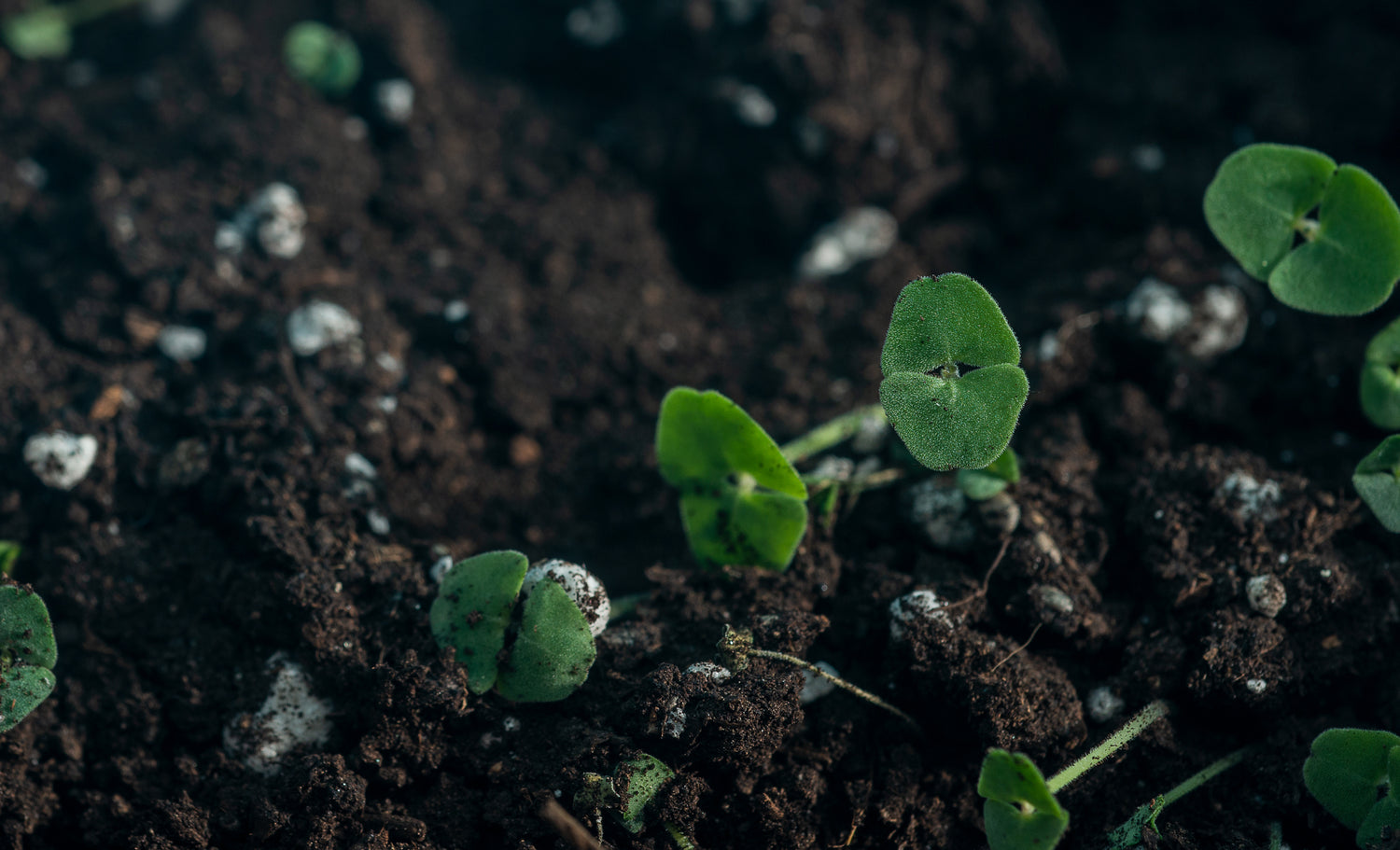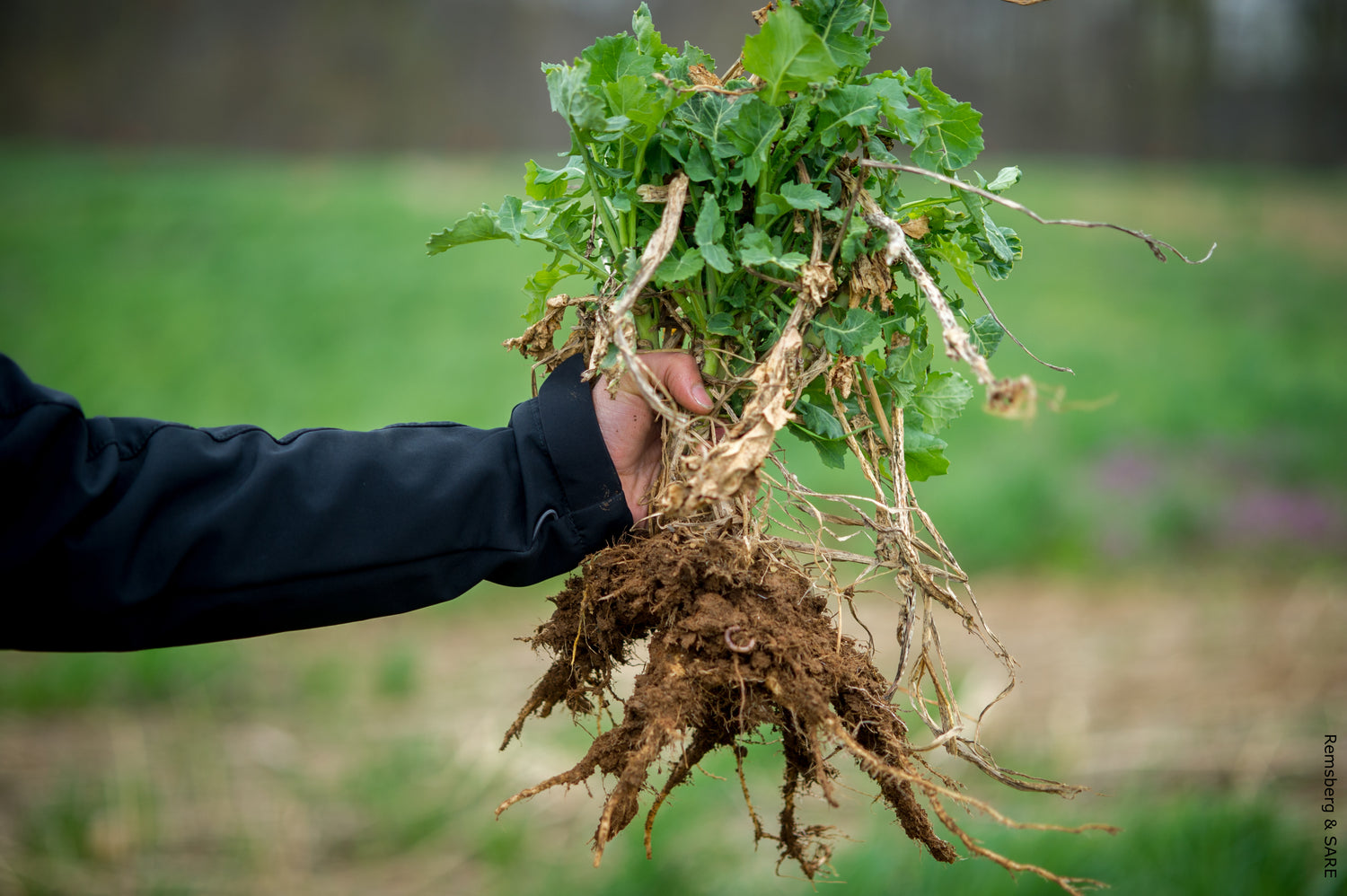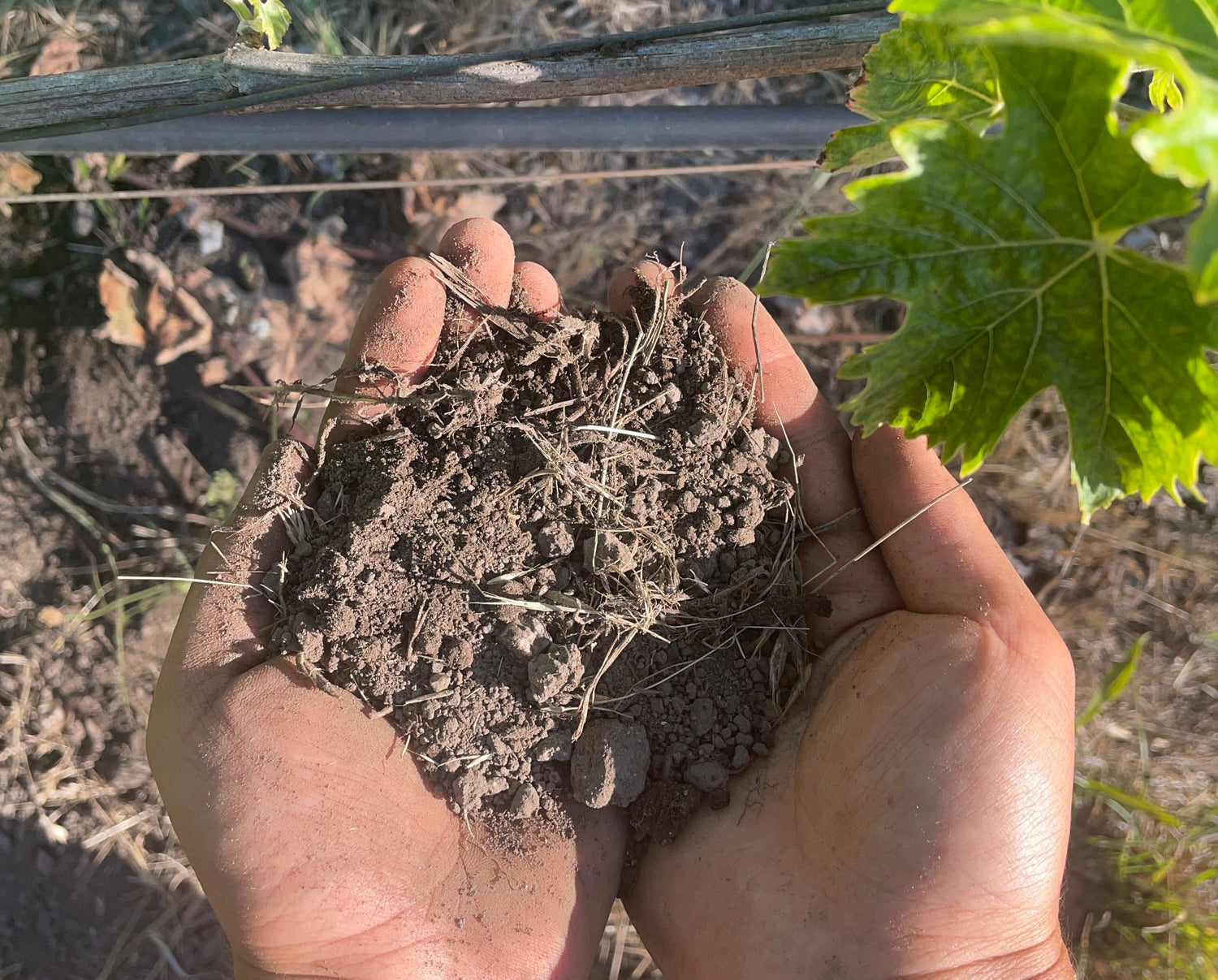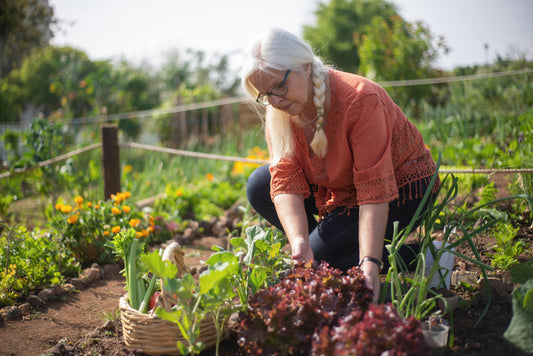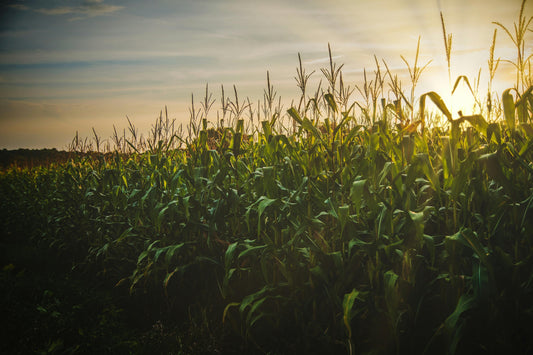Chicago's position in the Midwest's agricultural heartland creates diverse soil conditions shaped by glacial activity, river systems, and prairie ecosystems. Understanding these varied soil types is essential for successful farming, urban gardening, and sustainable land management in America's agricultural breadbasket.
Chicago features six primary soil types: fertile alluvial soils along rivers, water-retentive clay soils in lowlands, well-draining sandy soils near Lake Michigan, mixed glacial deposits across suburbs, organic-rich peat soils in wetlands, and compacted urban soils in developed areas, each supporting different agricultural and gardening applications.
Chicago Soil Types: Complete Guide to Midwest Agriculture & Urban Gardening
Understanding Chicago's Geological Foundation
Chicago's remarkable soil diversity stems from its complex geological history shaped by multiple Pleistocene glaciation events, extensive river systems, and Great Lakes formation processes. The Wisconsin Glaciation, which ended approximately 10,000 years ago, deposited extensive glacial till, outwash plains, and lacustrine sediments that form the parent materials for the region's modern soil systems.
The underlying bedrock consists primarily of Silurian and Ordovician limestone and dolomite formations that significantly influence soil chemistry, natural drainage patterns, and agricultural productivity throughout the region. Major river systems including the Illinois, Des Plaines, and Chicago Rivers have deposited fertile alluvial sediments across floodplains and terraces, creating some of the Midwest's most productive agricultural soils.
Chicago's humid continental climate brings moderate annual precipitation averaging 36 inches, along with significant temperature extremes that drive active soil formation processes. According to the USDA Web Soil Survey, this combination of diverse geological materials and climate conditions creates the highly productive agricultural soils that form the foundation of Midwest farming operations and support the region's $30 billion agricultural economy.
Primary Soil Types in the Chicago Region
The Chicago metropolitan area encompasses six distinct soil types, each with unique characteristics, management requirements, and optimal applications for agriculture and urban land use.
Alluvial Soils: Agricultural Powerhouses
Alluvial soils dominate the floodplains and terraces of major river systems throughout the Chicago metropolitan area, particularly along the Illinois River Valley, Des Plaines River corridor, and smaller tributary systems. These soils form through continuous sediment deposition during periodic flooding events, creating deep, fertile profiles with exceptional agricultural potential.
Research from the University of Illinois Extension shows that alluvial soils typically contain 3-6% organic matter, excellent nutrient-holding capacity, and balanced texture that provides optimal water retention while maintaining adequate drainage for most crop production systems.
These soils are concentrated primarily in Will County, Kane County, and throughout the Illinois River Valley where they support the majority of the region's corn and soybean production. Corn yields on prime alluvial soils consistently exceed 200 bushels per acre under proper management, while soybean yields typically range from 60-80 bushels per acre.
Alluvial soil management strategies:
- Implementing comprehensive erosion control measures including contour farming and grass waterways
- Managing periodic flooding through drainage systems and crop timing adjustments
- Maintaining organic matter levels through cover crop rotations and reduced tillage practices
- Optimizing nutrient management to match crop uptake patterns and minimize environmental losses
- Protecting soil structure through controlled traffic patterns and appropriate timing of field operations
Clay Soils: Water Management Challenges and Opportunities
Clay soils occur extensively throughout the Calumet region, South Side Chicago, and other low-lying areas where fine lacustrine sediments accumulated in ancient glacial lake environments. These soils present both significant opportunities and considerable management challenges for agricultural and urban applications.
The fine particle size and high surface area of clay soils provide exceptional nutrient retention capacity, often containing 4-8% organic matter and excellent cation exchange capacity. However, these same characteristics create significant drainage limitations and compaction susceptibility that require specialized management approaches.
According to the Illinois State Geological Survey, clay soils in the Chicago area typically contain 40-60% clay particles, creating distinctive shrink-swell properties that affect both agricultural operations and infrastructure development.
Clay soil improvement strategies:
- Installing subsurface drainage tile systems to remove excess water and improve field accessibility
- Adding organic matter through compost, manure, and cover crop residues to improve soil structure
- Implementing controlled traffic systems to minimize compaction from machinery operations
- Timing field operations during optimal moisture conditions to prevent structural damage
- Using deep tillage techniques cautiously to address compaction layers without creating additional problems
- Selecting crops and varieties that tolerate wet conditions and delayed planting schedules
Sandy Soils: Coastal and Drainage Benefits
Sandy soils occur primarily along the Lake Michigan shoreline and in areas with extensive glacial outwash deposits, particularly in Lake County and northern Cook County. These coarse-textured soils provide excellent drainage characteristics but require careful nutrient and water management for successful crop production.
Low water-holding capacity and rapid drainage make sandy soils challenging for conventional row crop agriculture but ideal for specialty crops requiring excellent drainage and early spring warming. These soils typically warm 2-3 weeks earlier than clay soils, enabling early planting of cool-season vegetables and extending growing seasons.
Research from the USDA Natural Resources Conservation Service indicates that sandy soils in the Chicago region typically contain less than 2% organic matter and require frequent but light nutrient applications to prevent leaching losses.
Sandy soil management approaches:
- Regular organic matter additions through compost, cover crops, and crop residue management
- Frequent, light nutrient applications timed to match crop uptake patterns
- Efficient irrigation systems to maintain adequate soil moisture without causing nutrient leaching
- Wind erosion control through windbreaks, cover crops, and surface residue management
- Specialty crop selection focusing on high-value vegetables, berries, and ornamental plants
Glacial Deposits: Variable Midwest Foundation
Glacial till and outwash deposits cover extensive areas throughout Chicago's suburbs and agricultural regions, representing the most widespread soil parent material in the area. These soils contain heterogeneous mixtures of particle sizes ranging from clay to gravel, creating highly variable growing conditions even within individual fields or properties.
The complex nature of glacial deposits means soil properties can vary dramatically over short distances, with some areas providing excellent growing conditions while others may have drainage limitations, shallow depth to restrictive layers, or other challenging characteristics that require site-specific management approaches.
According to Illinois Department of Agriculture soil surveys, glacial soils generally support productive agriculture when properly managed, but successful management requires understanding and accommodating local variations in soil characteristics.
Glacial soil management considerations:
- Conducting detailed site-specific soil assessment to understand local variations
- Implementing variable-rate management practices that account for differing soil conditions
- Installing drainage systems where needed while avoiding over-drainage of better areas
- Using precision agriculture technologies to optimize inputs based on soil variability
- Flexible crop selection and management that can accommodate diverse soil conditions
Peat Soils: Wetland Resources and Carbon Storage
Peat soils occur in wetland areas throughout the Calumet region, Illinois River Valley, and scattered locations where organic matter has accumulated under saturated conditions over thousands of years. These soils represent important ecological resources and significant carbon storage systems.
Extremely high organic matter content, often exceeding 20%, makes peat soils potentially very fertile when drained for agricultural use. However, drainage also leads to rapid soil subsidence and organic matter oxidation that permanently degrades the soil resource while releasing stored carbon to the atmosphere.
Research from Rodale Institute emphasizes that peat soils provide critical ecological functions including carbon sequestration, water filtration, flood control, and habitat for specialized wetland plant and animal communities that support regional biodiversity.
Peat soil conservation strategies:
- Maintaining natural wetland hydrology to preserve soil function and carbon storage
- Supporting sustainable uses that don't require drainage or soil destruction
- Implementing buffer zones around peat areas to protect water quality and soil integrity
- Monitoring subsidence and carbon loss in drained peat soils
- Restoring drained peat soils to wetland conditions where feasible
Urban Soils: Metropolitan Modifications and Opportunities
Urban soils throughout Chicago result from construction activities, industrial development, and various human modifications that have significantly altered natural soil conditions. These anthropogenic soils vary widely in quality, composition, and contamination status, requiring specialized assessment and management approaches.
Common characteristics include compaction from heavy equipment, contamination from industrial activities and transportation, altered drainage patterns, and incorporation of construction debris or fill materials. However, with appropriate assessment and remediation, these soils can support productive urban agriculture and green infrastructure.
The Chicago Department of Public Health emphasizes the importance of soil testing for contaminants before establishing food gardens, particularly for lead, petroleum products, and other urban pollutants that may affect human health.
Urban soil improvement strategies:
- Comprehensive contamination assessment before food production or children's play areas
- Mechanical decompaction using specialized equipment or hand tools
- Organic matter additions to improve structure and biological activity
- Raised bed construction to overcome severe soil limitations
- Appropriate plant selection for challenging urban growing conditions
- Green infrastructure applications that provide environmental benefits
Soil Characteristics and Management Applications
Understanding the specific management requirements for each soil type enables targeted approaches that optimize both agricultural productivity and environmental sustainability throughout the Chicago region.
| Soil Type | Key Characteristics | Best Applications | Management Focus |
|---|---|---|---|
| Alluvial | Fertile, deep, well-structured, high organic matter | Row crops, vegetables, orchards, high-value agriculture | Flood management, erosion control, nutrient optimization |
| Clay | Fine texture, high water retention, nutrient-rich | Wet-tolerant crops, pasture, specialty drainage crops | Drainage improvement, compaction prevention, timing |
| Sandy | Coarse texture, excellent drainage, early warming | Specialty crops, vegetables, recreation, urban parks | Water and nutrient retention, organic matter building |
| Glacial | Variable texture, mixed composition, heterogeneous | General agriculture, development, mixed land use | Site-specific assessment, precision management |
| Peat | High organic matter, saturated, carbon storage | Wetland conservation, specialty crops, carbon sequestration | Hydrology maintenance, conservation practices |
| Urban | Modified, variable quality, potential contamination | Gardens, green infrastructure, urban forestry | Remediation, decompaction, contamination assessment |
Agricultural Applications and Crop Selection
Chicago-area soils support diverse agricultural production systems that contribute significantly to Illinois's position as a leading agricultural state, generating over $19 billion in annual agricultural receipts according to USDA statistics.
Corn and soybean production dominates on alluvial and well-drained glacial soils where adequate fertility and drainage support consistently high yields. Illinois ranks second nationally in corn production and first in soybean production, with much of this productivity concentrated in the fertile soils surrounding Chicago.
Vegetable production concentrates on prime alluvial soils and improved glacial soils near urban markets, taking advantage of both soil quality and proximity to processing facilities and consumers. Major crops include sweet corn, processing tomatoes, peppers, onions, and diverse leafy greens that supply both local and regional markets.
Specialty crop production including pumpkins, berries, orchard fruits, and nursery crops succeeds on specific soil types with targeted management approaches. Site selection that matches crop requirements to soil characteristics optimizes both production success and economic returns.
Crop Rotation and Cover Cropping Benefits
Effective crop rotation systems maintain soil health while optimizing economic returns. Corn-soybean rotations dominate but increasingly include cover crops that provide additional soil health benefits, nitrogen fixation, and erosion control during vulnerable winter months.
Research demonstrates that cover crops can reduce nitrogen fertilizer requirements by 30-50 pounds per acre while improving soil structure and organic matter content. Popular cover crops include cereal rye, crimson clover, and winter wheat that establish well in Chicago's climate conditions.
Urban Gardening and Green Infrastructure
Urban agriculture throughout Chicago utilizes diverse soil improvement techniques and innovative growing methods to overcome challenging soil conditions while providing fresh food access and community development opportunities.
Community gardens utilize various soil improvement strategies including raised beds filled with imported soil, extensive compost additions, and soil testing programs to create productive growing conditions in urban environments. Chicago's GreenCorps program has supported over 600 community gardens that provide fresh food access and neighborhood beautification.
Rooftop agriculture and container growing provide viable alternatives where ground soil conditions are unsuitable for food production due to contamination, poor drainage, or other limitations. These systems enable food production while avoiding soil-related constraints entirely.
Native Plant Landscaping for Soil Conservation
Native plant landscaping works effectively across different soil types by selecting species naturally adapted to local soil and climate conditions, reducing maintenance requirements while supporting regional ecosystems and wildlife habitat.
Prairie restoration projects utilize native grasses and wildflowers that provide excellent soil conservation benefits while creating attractive landscapes. Popular native species include big bluestem, purple coneflower, wild bergamot, and native sedges that thrive in Chicago's diverse soil conditions.
Professional Soil Testing and Management Services
Regular soil testing provides essential information for optimizing management across all soil types in the Chicago region, with professional testing revealing pH levels, nutrient availability, organic matter content, and potential limitations that guide management decisions.
The University of Illinois Extension provides comprehensive soil testing services specifically calibrated for Midwest conditions, offering detailed interpretation and management recommendations. Testing costs typically range from $15-40 per sample depending on the scope of analysis.
Commercial soil testing laboratories offer specialized services including contamination screening, biological activity assessment, and precision agriculture sampling that supports variable-rate management systems increasingly used in modern agriculture.
Soil Amendment and Improvement Strategies
Soil amendments should target specific needs identified through professional testing. Limestone applications correct acidic pH conditions common in some glacial soils, while gypsum can improve soil structure in heavy clay soils without affecting pH levels.
Organic matter additions benefit all soil types through improved structure, increased water-holding capacity, enhanced biological activity, and gradual nutrient release. High-quality compost, aged manure, and crop residues provide different benefits depending on soil type and management objectives.
Drainage improvements may be necessary for clay soils and poorly drained areas, with options including subsurface tile drainage, surface grading, and raised bed construction providing solutions for different situations and budget considerations.
Climate Adaptation and Soil Resilience
Chicago's continental climate brings significant temperature extremes and variable precipitation patterns that influence soil management and crop selection decisions throughout the growing season. Climate change projections suggest these patterns will become more variable and extreme.
Freeze-thaw cycles during winter and early spring can cause significant soil structure damage in clay soils, while summer drought periods increasingly stress crops on sandy soils with limited water retention capacity. These climate challenges require adaptive management strategies.
Building Soil Resilience
Adaptive management strategies include cover cropping to protect soil structure during winter months, improved drainage systems for excess water removal during wet periods, and efficient irrigation systems for drought stress mitigation during dry periods.
Soil health building practices including reduced tillage, diverse crop rotations, and organic matter additions create more resilient soil systems that better withstand climate extremes while maintaining productivity and environmental function.
Conservation and Environmental Stewardship
Soil conservation practices throughout the Chicago region help maintain long-term productivity while protecting water quality and environmental resources that support both agricultural and urban communities.
The Conservation Reserve Program (CRP) and Environmental Quality Incentives Program (EQIP) provide financial assistance for implementing conservation practices that protect soil resources while maintaining agricultural productivity. These programs have enrolled over 100,000 acres in the Chicago metropolitan area.
Water Quality Protection
Nutrient management planning reduces fertilizer losses that can contribute to water quality problems in local streams and ultimately the Gulf of Mexico hypoxic zone. Precision application techniques and soil testing optimize nutrient use efficiency while minimizing environmental impacts.
Buffer strips along waterways, controlled traffic patterns, and integrated pest management practices provide additional environmental benefits while maintaining agricultural profitability and soil health.
Research and Innovation in Midwest Soil Science
University of Illinois and other regional research institutions continue advancing soil science knowledge and developing improved management practices specifically adapted to Midwest soil conditions and climate patterns.
Precision agriculture technologies help farmers optimize fertilizer applications, manage variable soil conditions within individual fields, and improve overall resource use efficiency while reducing environmental impacts and production costs.
Soil health assessment tools provide better understanding of biological soil functions and guide management decisions that support both productivity goals and environmental objectives, helping farmers adopt practices that build long-term soil resilience.
Economic Impact and Agricultural Value
Chicago's diverse soil resources generate substantial economic value while supporting critical employment throughout the agricultural supply chain. Illinois agriculture contributes over $19 billion annually to the state economy, with much of this production concentrated on the fertile soils surrounding Chicago.
The economic multiplier effect of agriculture extends far beyond farm gate values, supporting food processing, transportation, equipment manufacturing, and related industries that provide thousands of jobs throughout the region. Maintaining soil health ensures continued economic benefits for both rural and urban communities.
Future Sustainability and Soil Stewardship
Long-term soil sustainability in the Chicago region requires balancing immediate productivity needs with environmental stewardship and climate adaptation strategies that ensure continued soil function for future generations.
Emerging practices including carbon farming, regenerative agriculture, and soil microbiome management offer promising approaches for building soil health while providing economic returns and environmental benefits. These practices become increasingly important as climate variability increases and environmental regulations evolve.
Conclusion
Chicago's six distinct soil types reflect the region's rich geological history and create the foundation for both Midwest agricultural productivity and sustainable urban development. From highly fertile alluvial soils that support major crop production to challenging clay soils requiring specialized management, each soil type contributes unique opportunities and considerations for land use planning and management.
Success in working with Chicago's diverse soils requires understanding their specific characteristics, implementing appropriate management strategies, and adopting conservation practices that maintain soil health while achieving productivity goals. Professional soil testing, targeted amendments, drainage improvements where needed, and sustainable management practices provide the foundation for optimizing both agricultural and urban land uses.
Whether managing large-scale agricultural operations producing corn and soybeans for global markets or establishing community gardens that provide fresh food access in urban neighborhoods, working with rather than against natural soil characteristics provides the most sustainable and economically viable approach. Through continued research, education, and implementation of best management practices, Chicago's soils will continue supporting both agricultural productivity and urban sustainability for future generations.
Sources
- USDA Natural Resources Conservation Service. Web Soil Survey - Illinois. https://websoilsurvey.sc.egov.usda.gov/
- University of Illinois Extension. Soil Management for Illinois Agriculture. https://extension.illinois.edu/global/soil-fertility
- Illinois Department of Agriculture. Agricultural Statistics and Resources. https://www2.illinois.gov/sites/agr/Resources/Pages/default.aspx
- USDA Natural Resources Conservation Service. Soil Health Assessment Guidelines. https://www.nrcs.usda.gov/conservation-basics/natural-resource-concerns/soils/soil-health
- Illinois State Geological Survey. Geology and Soils of Illinois. https://www.isgs.illinois.edu/
- Chicago Department of Public Health. Urban Soil and Gardening Guidelines.







